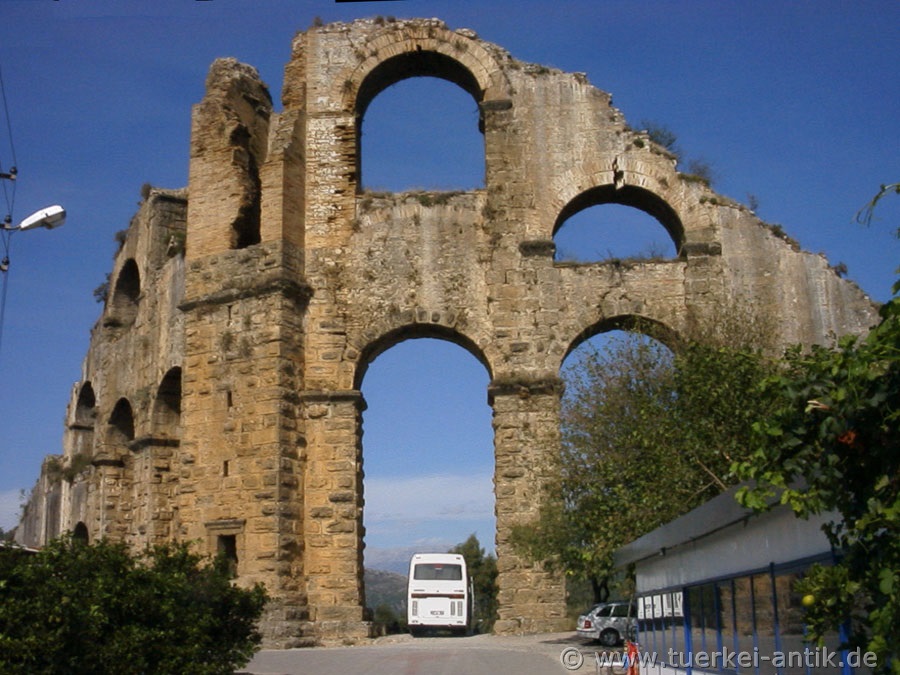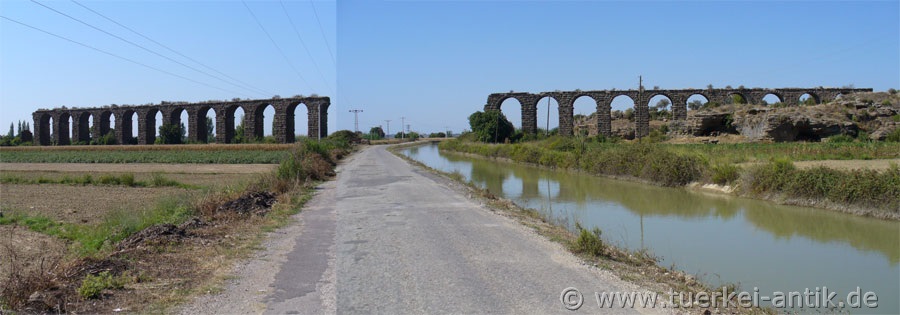 |
|
Ancient aqueducts in Turkey Aspendos |
|
|
|
||
| Other names: | ./. | ||
| Roman province: | Pamphylia | ||
| Location: | Belkis, Antalya county, Province Antalya | ||
|
All aqueducts in the Roman provinces date from the Early and High Imperial Period (i.e. from the 1st to the 3rd century). |
|||
| The history of Aspendos: | |||
|
According to Greek tradition, Aspendos was founded around the 12th century BC by settlers from the Peloponnesian Argos. The legendary seer Mopsos, who was also revered by cities such as Perge as the city father, was considered one of the founders. The city had a very eventful history and was under Lydian, Persian, Greek, Ptolemaic, Seleucid, Roman, Byzantine and Seljuk rule for 800 years. Little is known about their Greek history - excavations can certainly bring more knowledge about the pre-Roman period in the future. The Battle of Eurymedon is documented in literature. |
|||
|
|
|||
|
|
|||
 |
|||
| The pressure tower in Belkis | |||
|
|
|||
|
|
|||
| The pressure tower in Sarıabalı | |||
 |
|||
|
|
|||
| Stones of the pressure pipe | |||
| Photos: @chim | |||
| Translation aid: www.DeepL.com/Translator | |||
| Source: Wikipedia and others | |||
|
|

